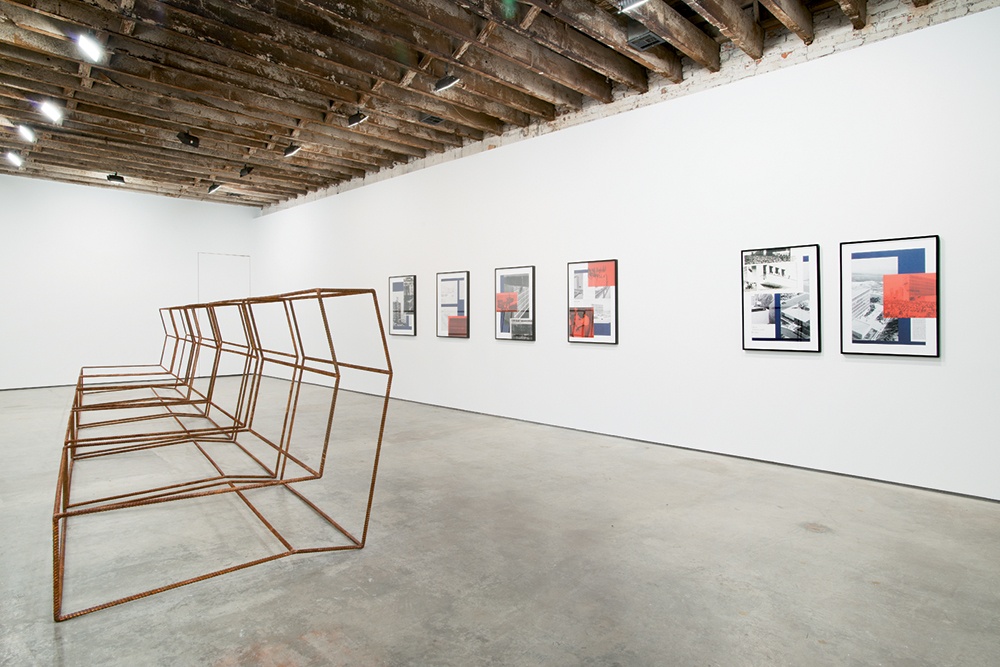Artist:
Terence Gower (born 1965 in British Columbia, Canada; lives and works in New York City, USA).
Description:
“‘Havana Case Study’ is the second in a series of installations that use American diplomatic architecture as a tool to analyze US international relations (the first work in the series is Baghdad Case Study), and is based on two years’ research in Havana and in US archives. In the late 1940s, the US embarked on an ambitious embassy-building campaign, employing the leading modern architects of the day, and calling for an architecture that expressed ‘the US as an open, dynamic and cooperative modern country…’ Gower’s research examines the embassy program’s attempt to represent the aspirations of a government and its foreign policy through architecture, and how both the function and meaning of embassy buildings have been altered by the US and host governments over the course of their existence.
“The new Havana embassy opened its doors in 1953, then closed in 1961 when the US and Cuba broke diplomatic relations. Sixteen years later president Carter opened the US Special Interests Section in the building, which has now once again raised the US flag under president Obama. Criticism of the building when it opened focused on the balcony off the ambassador’s office, high up on the sea façade, which was considered a security risk for pinpointing the location of the ambassador. But the balcony remains in place, an artefact of the diplomatic state of limbo of the 1960s and 70s.
“Balcony, 2016, is a 1:1 scale outline of the US ambassador’s balcony in Havana—a symbol of diplomatic stalemate and its political and economic fallout. The balcony is rendered in rebar, a basic construction material that has been put to impressive use in Cuba: in furniture, fences, security grilles, car parts and even fairground rides. Rendered in this raw material, in five interchangeable sections, Gower’s monumental sculpture appears to be under construction, soon to be hoisted triumphantly into place. The exhibition also includes one of a series of scaled-down sculptures, titled Modules, 2016, which incorporate hand-woven rattan panels, evoking both Gio Ponti’s mid-century designs and woven palm leaf objects found in the Cuban countryside.
“A series of collaged prints, Political Services, 2016 imagines a comprehensive architectural exhibition on the embassy building, as presented in the late 1950s, at the height of the modernization and expansion of Havana. The artist frames details from this period display of photographs and documents, and overlays these views with more recent photographs and newspaper clippings that report on the many uses the building has served—mostly for propaganda purposes—since the Cuban revolution.
“The forms, materials, and imagery used in the sculptures and print series of ‘Havana Case Study’ are each derived from key artefacts and events from the sixty-three year history of the US Embassy in Havana, a pivotal site in US-Cuba relations. President Obama has made the reestablishment of diplomatic and economic relations with Cuba one of the mandates of his last two years as president. These 2016 elections will probably have more effect on Cuba than on any other country outside the US itself. Donald Trump has vowed to ‘cancel’ Obama’s presidency within days of taking office, including the recent opening to Cuba, but Hillary Clinton will most certainly follow through with Obama’s Cuba project, including dismantling the US embargo. The election on November 8th will thus determine whether this building, built in 1953 and refurbished in the 1990s will once again take up its function as a full-fledged US embassy.
—”6 November – 23 December 2016: Havana Case Study; Terence Gower,” Simon Preston Gallery.
“One work, Balcony, is a full-scale rendering, in rebar, of the U.S. ambassador’s balcony in Havana, Cuba’s capital. According to the gallery’s press release, the balcony is ‘a symbol of diplomatic stalemate and [its] political and economic fallout.’ When the building opened in 1953, critics zeroed in on the fact that the balcony posed a security risk to the ambassador, as everyone would know his exact location. The building closed in 1961 when the U.S. and Cuba halted diplomatic relations, and the balcony, Gower claims, symbolizes the diplomatic limbo between the two countries in the 1960s and 70s. (Today, under President Obama, the building sports at U.S. flag once again.) Rebar in its naked form is a common construction material in Cuba, but here, in an apt metaphor for diplomacy, the material makes Gower’s sculpture seems permanently under construction.”
—Audrey Wachs, “New Exhibition Interrogates Architecture’s Role in U.S.-Cuba Diplomatic Relations,” The Architects Newspaper, October 25, 2016.


